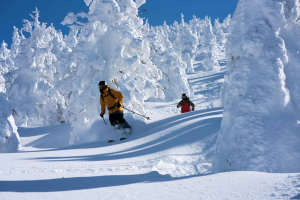A Tale From Tohoku: Exploring One of Japan’s Most Enchanting Regions
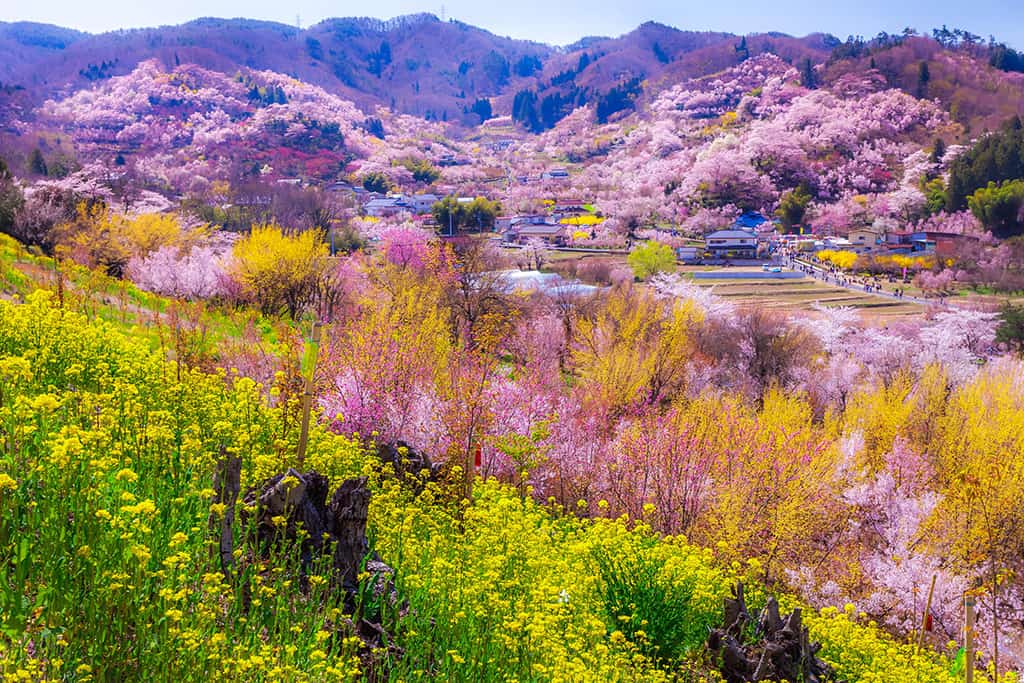
Mountainwatch | Nadine Robb
A region that has long since been shrouded in mystery and tradition, Northern Honshu’s Tohoku region is a trove of unexploited treasures. The intertwined existence of humans and their natural surroundings has forged an unwavering identity that has spanned the centuries.
While much of the region’s “travel map” remains unknown, the pockets that we have discovered are alive with adventure and realness, offering an unaltered reflection of Japan; and one that is not (yet) awash with western faces.
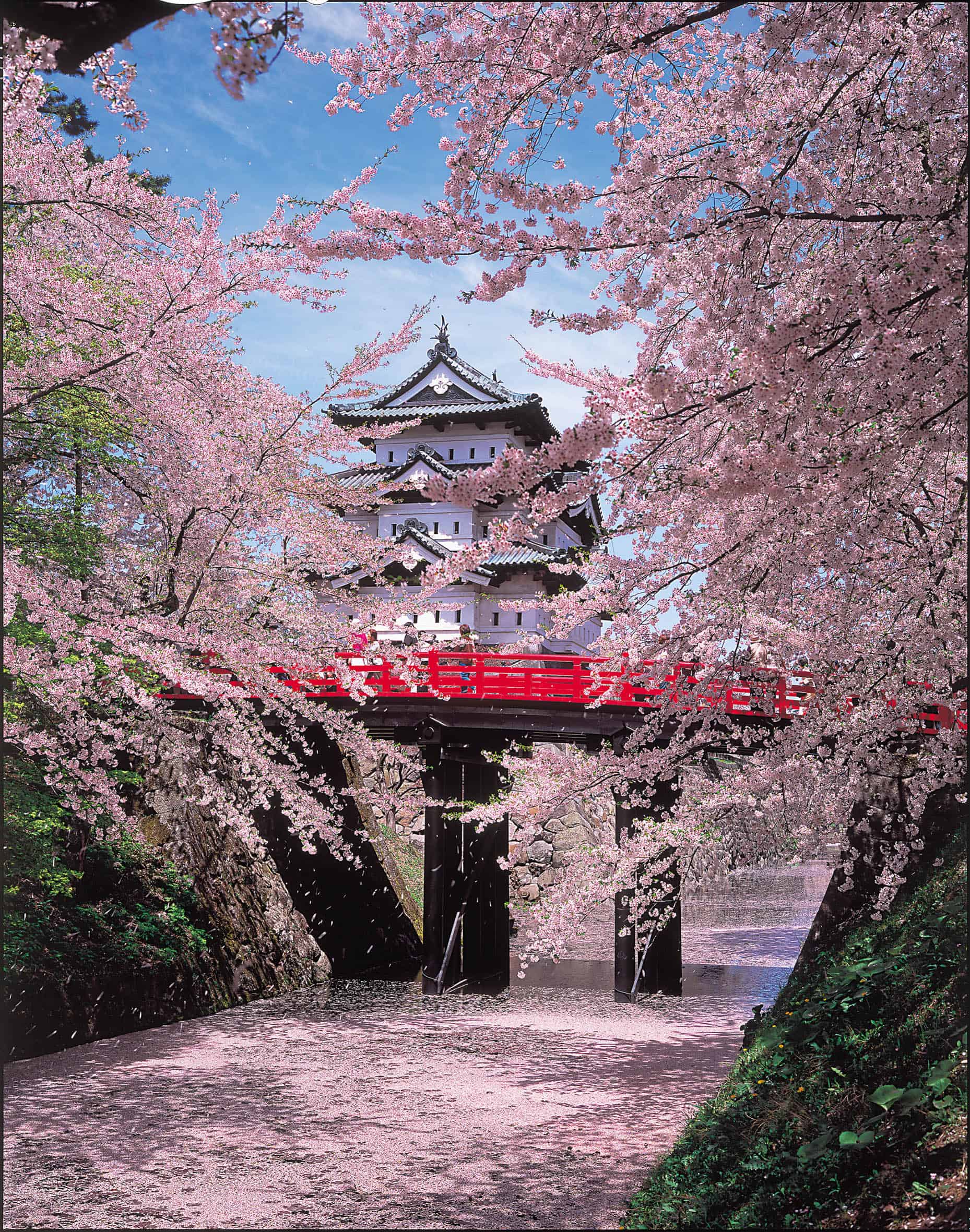
Located in Aomori prefecture is the historic city of Hirosaki: a source of vibrancy and colour during the spring, summer and fall seasons in Tohoku. With a centuries old white-walled castle, thousands of cherry blossom trees and petal covered waterways – Hirosaki Park embodies all that one imagines Japan to be, through the most rose tinted of spectacles. Unsurprising then, Hirosaki Park is regarded as one of Japan’s top three places for Hanami (that is, cherry blossom viewing). The expansive castle grounds are accentuated with bright red bridges, stone walls, watch towers, moats and vegetation, while the outer edges are lined with food and festival vendors. Not unlike Mount Fuji as it dons its springtime snow-cap, Mt Iwaki stands proud in the background, further fortifying the overwhelming sense of pure Japan.
With Mount Hakkoda and its enormous sprawl of springtime backcountry routes just an hour away, it’s easy to enjoy the best of both. During the winter months, the colours are muted by heavy snowfall, though the effect is no less enchanting as the “snow sakura” are tastefully illuminated brought to life by the ever-descending snow.

Outside Fukushima city (located in the prefecture of the same name) is another hanami highlight that is at its best during the spring and summer months. Hanamiyama is just that. A private park upon a hillside overlooking Fukushima city, the generosity of the owners has allowed the public to come and enjoy their mind-boggling plethora of cherry blossoms and flowers for decades. More plants than you could count, it is the type of place that your camera cannot do justice to – unable to capture the depth of colour and vastness that is before you.
During the winter, there is no shortage of powder skiing opportunities, as mountain ranges and snow resorts surround Fukushima City. Most of the resorts are located to the south-west (including Minowa, Grandeco & Urabandai), as well as the better known Zao Onsen to the north (home of the infamous “snow monsters”).
Alts Bandai offers a great variety in slope options, an impressive terrain park and a truly luxurious snow experience. The Hoshino Resorts owned and operated Alts Bandai Ski Resort feels fresh, contemporary and fun. Curious and quirky style choices throughout the resort make you want to whip out your phone for “Insta ops”, while the ski in/ski out Bandaisan Onsen Hotel ensures a seamless transition between the slopes – and your bed (with some fantastic meals and ever so relaxing onsens in between).
On the other side of the same mountain (Mt Bandai), there is Nekoma Ski Resort. Another string in the Hoshino Resorts bow, north-facing Nekoma differs from its southern counterpart in almost every way. Having less exposure to direct sunlight for fewer days of the season, the snow retains its subzero temperatures for longer, creating what they’ve coined (ever so proudly ) “microfine snow”. A combination of elevation (above 1000 metres), a typically drier inland climate create snow that is akin to what you’d expect to find in Hokkaido – where temperatures are consistently much lower. The result is light, dry, bouncy snow, fit for a Cody Townsend ski movie. The off piste areas and Cat Ski Tours are the best ways to maximise your powdery turns.
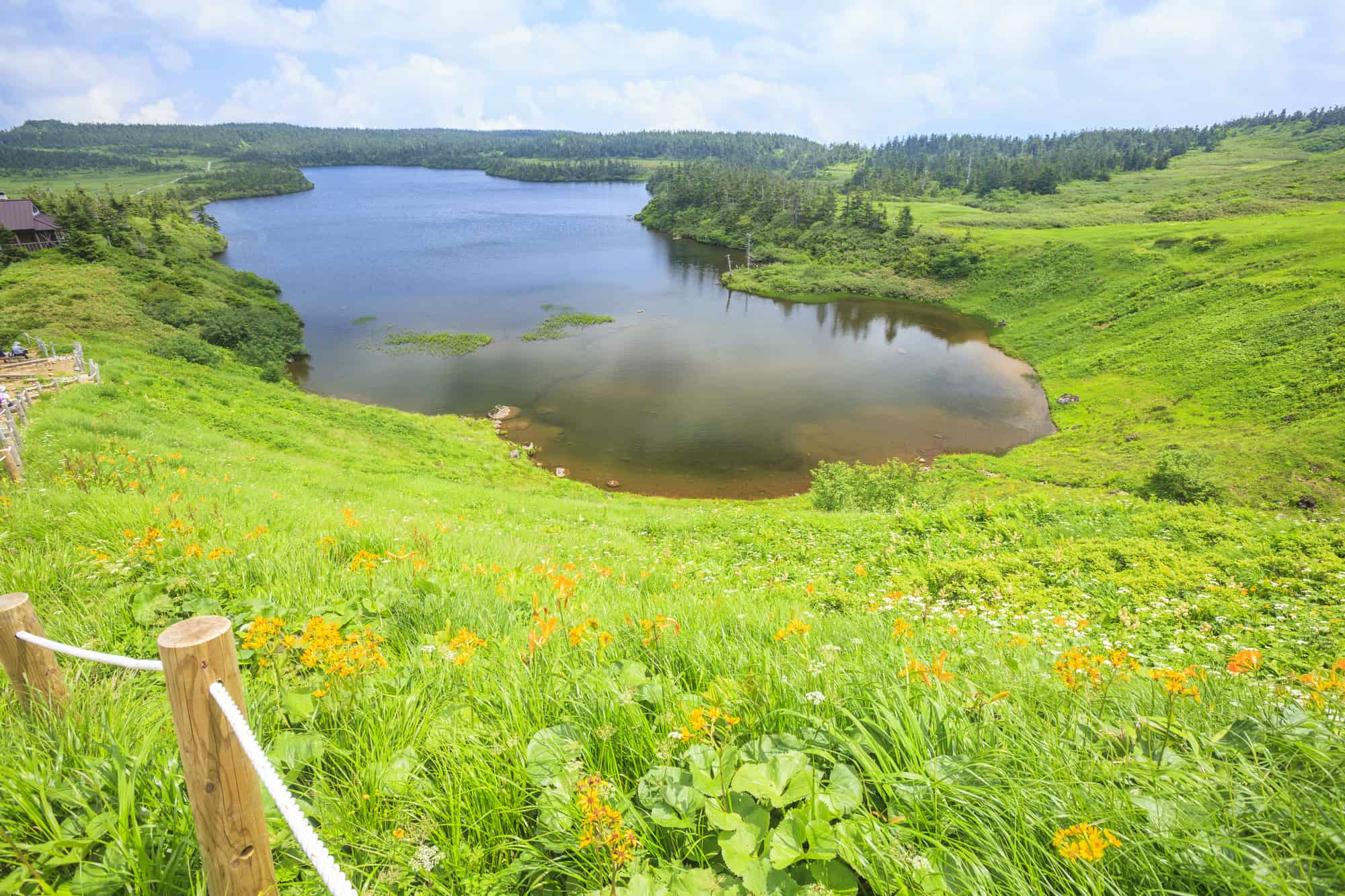
During the “green” season, some of Japan’s best hiking trails and hut to hut expeditions can be found in the Towada-Hachimantai National Park. Encompassing more than 850 square kilometres of dramatic Tohoku wilderness, an easy to navigate network of trails extend throughout the park – leading past some of the most diverse vistas of the region. Board-walked wetlands, vibrant volcanic ponds, alpine forests, plunging waterfalls, “koyo” (that is, autumn colours) covered mountain tops and even ancient lava fields – name but a few of the trail backdrops – while the distances, physical demands and skill requirements range from minimal to significant, ensuring that there is something for every level of hiker.
And while the hiking season runs through the spring, summer and autumn, winter offers a world of snow sport fun in the form of Hachimantai Snow Resort. Sprawled over two separate mountains, an even scattering of beginner, intermediate, and advanced terrain is available (tree skiing too!), with hotels and hot springs close at hand.
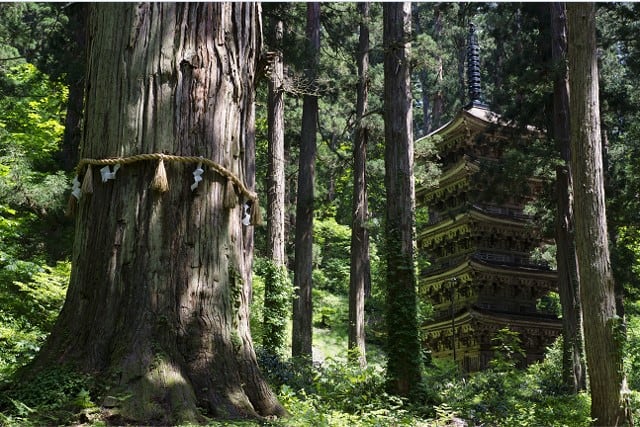
Another gem of the Tohoku region is The Dewa Sanzan, buried in the Yamagata mountains some 500 kms north west of Tokyo. “Dewa” – an ancient province that spanned the modern day prefectures of Yamagata and Akita, and “Sanzan” – three mountains. The Dewa Sanzan is a piece of iconic Japanese legacy so curious and well protected that it is today one of the most significant pilgrimages in the country. The three mountains – Mount Haguro (the mountain of birth), Mount Gassan (the mountain of death) and Mount Yudono (the mountain of rebirth) range from 414 to 1984 metres and collectively comprise the pilgrimage – typically summited in that order.
Mount Haguro, as the lowest and therefore most trodden, has 2446 stone steps that snake through a dense forest of centuries old cedars, before yielding a five story wooden pagoda that was built sometime between year 931 and 938. Mount Yudono is best known for it’s larger than life bright red torii gate, while Mount Gassan’s rocky “top of the world” summit shrine conjures images of wizened mountain top monks, sitting cross legged as they anticipate your arrival. Which incidentally, you may well find, as the Yamabushi (that is, spiritual mountain ascetic), are throughout the Dewa Sanzan. Upholding their centuries long traditions, you’ll easily recognise them in their all white robes, staff in hand and Horagai shell around the neck.
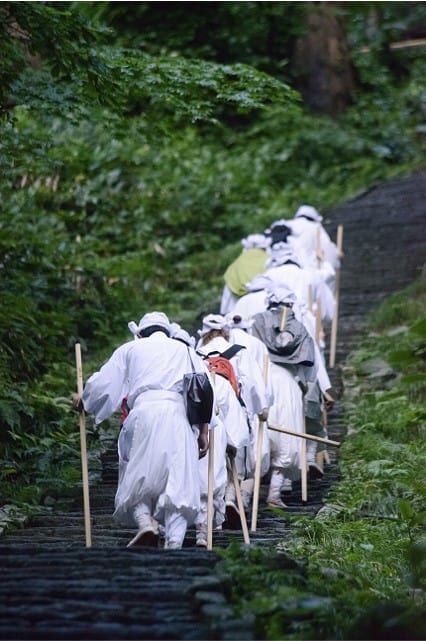
The snowfall that Mount Gassan receives is so much during the winter that the ski resort of the same name (located on the it’s flank) -is closed during the winter months. As Japan’s latest opening ski resort, it usually opens in April and closes in July. Visiting during April will offer the best snow and ski touring conditions of its shifted season, whilst still delivering a distinctly winter environment. By July, one can descend the white slopes in a t-shirt, under a brilliant blue sky whilst overlooking lush greenery.
The latitude and snowfall of the Tohoku region allows for a truly unique visit during the spring, summer and fall seasons. One in which snow-sports and sakura(cherry blossoms) can be enjoyed together, and the region’s natural landscape is at it’s best. But more than that; Tohoku is relatively unexplored by the average non-Japanese traveller, and as we delve further into the realms of mountain monks and century old castles – we discover afresh the immovable strongholds that shape the Japanese culture. A culture that – particularly in Tohoku – has been shaped by millennia of snowfall, and just so happens to offer some of the best skiing on the planet come winter time. After all, skiing in Japan is never just about skiing.




